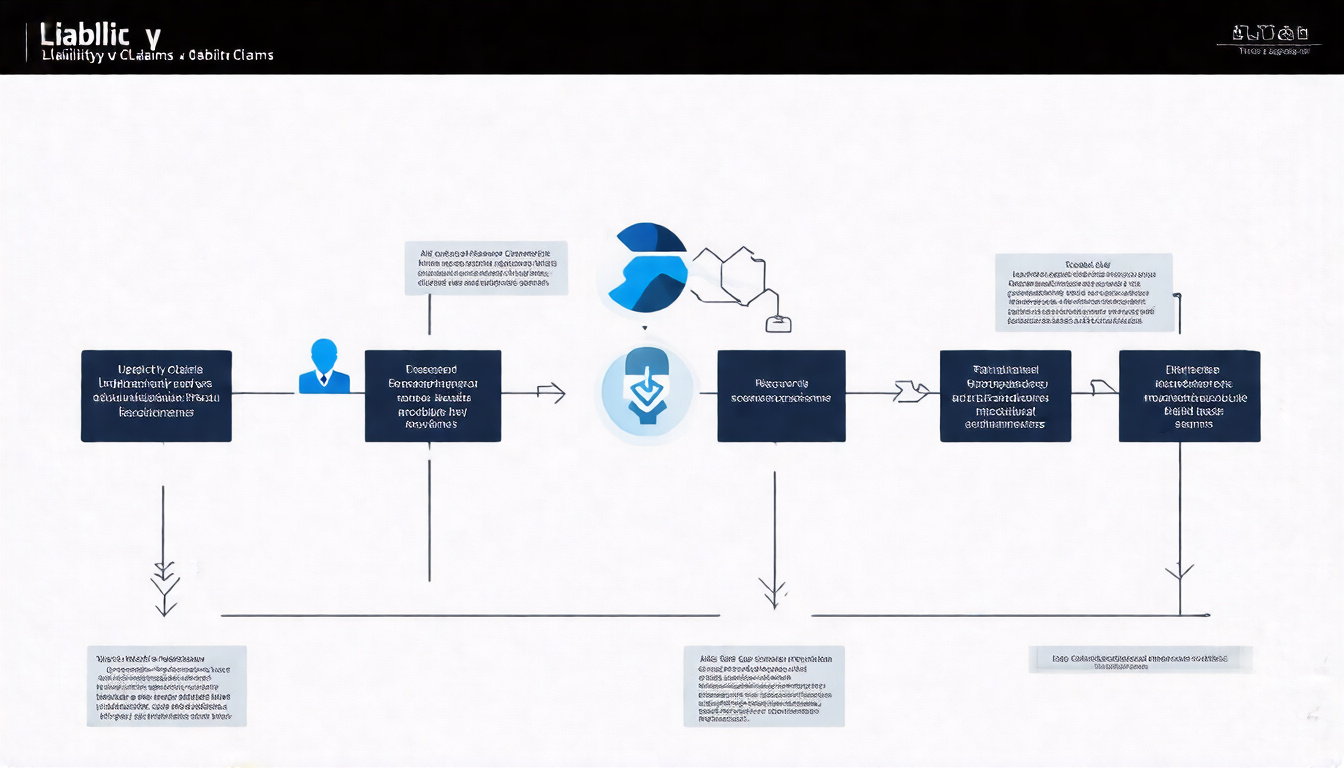Navigating the liability claims process can feel hard. Many people face accidents or events that harm their bodies or property. You file a claim or defend one. You protect your rights by knowing each short step. This guide shows you each step in the liability claims process. It helps you feel sure and ready.
What Is the Liability Claims Process?
The liability claims process is a formal route. One party asks for money for harm. The other party may have caused the harm by carelessness or intent. You prove the other side’s fault. You then negotiate or go to court for payment.
For claimants, this process proves fault and wins funds. Funds cover bills, lost pay, repairs, and more. Each tight step helps you avoid mistakes and ends the process faster.
Step 1: Reporting and Documenting the Incident
You report the incident fast to the right people. This report goes to your employer, insurer, or local police, depending on the claim.
Key Actions:
- Notify the responsible person or insurer right away.
- File a police report when needed, like after a car accident.
- Gather evidence such as photos, videos, witness details, or any physical clue.
You document each fact clearly. This tight record stops later questions.
Step 2: Filing the Claim
After you report and gather evidence, you file your claim. You fill out claim forms from the insurer or the payor.
What to Include:
- A clear description of the incident.
- All evidence from Step 1.
- Medical records if you were hurt.
- Proof of costs such as repair bills or lost wages.
You file without mistakes and on time. Wrong or late paperwork may lead to a denied claim.
Step 3: Investigation and Liability Determination
After your claim, an adjuster checks your facts, damages, and who is at fault. They talk to all involved.
Investigation Includes:
- Interviewing each person and witness.
- Reading police and medical reports.
- Checking the damage.
This tight check must show fault before you get money. If the other side disputes responsibility, the process may slow or head to dispute talks.

Step 4: Negotiation and Settlement Offer
When fault is shown, the insurer offers an amount. You then negotiate to get a fair payment.
Tips for Successful Negotiations:
- Keep evidence and expense proofs close at hand.
- Know your legal rights and the claim’s worth.
- Get legal help if the claim is hard or the amount is high.
Negotiation often asks for small steps and patience.
Step 5: Resolution and Compensation
If you and the insurer agree on a sum, the insurer pays you. Then, the liability claims process ends. If you do not agree, you may go to court.
After Receiving Compensation:
- Read the signed agreement carefully.
- Check that it covers all your losses.
- Know that signing drops your right to pursue more claims.
Step 6: Litigation (If Necessary)
If talks do not work, you can file a lawsuit. In court, a judge or jury will decide who is at fault and what compensation you get.
Litigation Considerations:
- It takes time and money.
- You must show solid evidence and call expert witnesses.
- A settlement may still happen during court steps.
An expert lawyer often improves a hard case.
Common Challenges in the Liability Claims Process
Some issues might slow your process:
- Disputes on fault or blame.
- Slow claim checks and processing.
- Missing or weak evidence.
- Low settlement offers from insurers.
- Strict deadlines and legal cutoffs.
Prepare for these challenges. Answer them fast and smartly.
Checklist: What Claimants Should Do in the Liability Claims Process
- Report the incident immediately.
- Gather all evidence clearly.
- File your claim on time with full documents.
- Work with the investigators.
- Check settlement offers closely.
- Ask for legal advice if disputes grow.
- Save all communications.
- Meet every deadline to guard your rights.
FAQ About the Liability Claims Process
Q1: How long does this process usually take?
A1: The time can change. It may take weeks to months, and even longer if you go to court.
Q2: Can I handle this process without a lawyer?
A2: Yes, many manage on their own. But, a legal expert can help if your case is hard or unclear.
Q3: What if the other side denies fault?
A3: If they do, you may need more checks, talks, or a court case to settle the matter.
Conclusion: Take Control of Your Liability Claim Today
Understanding the process is the first short step to get the funds you deserve. Follow each step closely. Plan, record, and get legal help when needed. This quick, methodical work boosts your chance of success.
Act fast and keep your details close. The right move now can protect your rights. If you must file a claim, start with careful evidence. Reach trusted experts for help. Do not risk your rights—stand up and work your claim.
For more tips on handling claims and legal talks, visit the Insurance Information Institute’s website (source).
Author: Doyle Weaver, Attorney at Law
Home | Estate Planning | Personal Injury | Hill Country Lawyer | Terms of Service | Privacy Policy
© 2025 Digital Law Firm, P.C.
Disclaimer: The content provided in this blog is for educational and informational purposes only. It is not intended to constitute legal advice or establish an attorney-client relationship. The information presented does not address individual circumstances and should not be relied upon as a substitute for professional legal counsel. Always consult a qualified attorney for advice regarding your specific legal situation. The author and publisher are not liable for any actions taken based on the content of this blog.

Leave a Reply